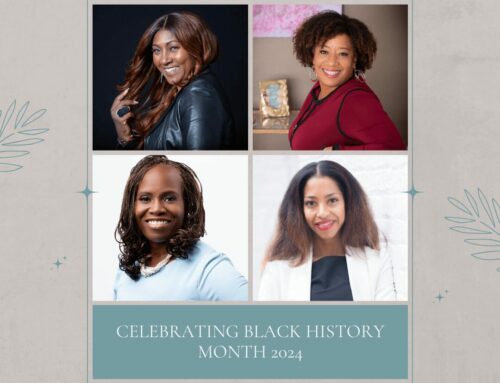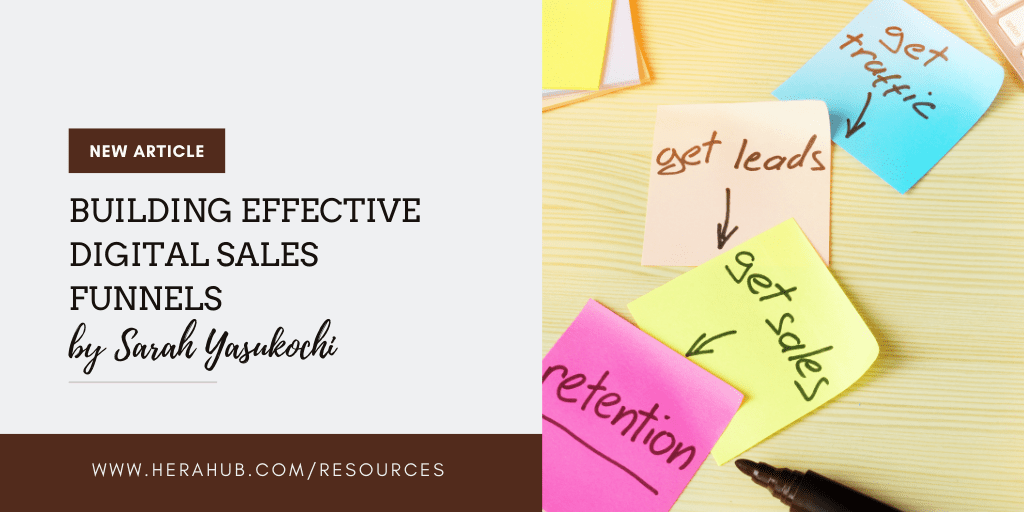
A Hera Hub Business Booster Recap, with Sarah Yasukochi
A sales funnel is every step that someone has to take in order to become your customer. In the digital space, sales funnels are critical to both optimizing the customer experience and converting more customers. Understanding your sales funnel helps you to better understand your potential customers at each stage of the purchasing experience. These insights are key to make the right marketing decisions, both in terms of marketing initiatives and budget. Remember, your goal is to transform prospects into recurrent clients through your sales funnel.
THE STAGES
A sales funnel captures the stages of your customer’s experience with your business or brand. In each stage, the customer is experiencing a more in-depth knowledge of your business and there is an opportunity for your business to introduce different initiatives for the ideal experience. The ultimate goal is to gain recurring clients by offering valuable service(s). The sales funnel is an opportunity to nurture the relationship with potential clients and ultimately retain them.
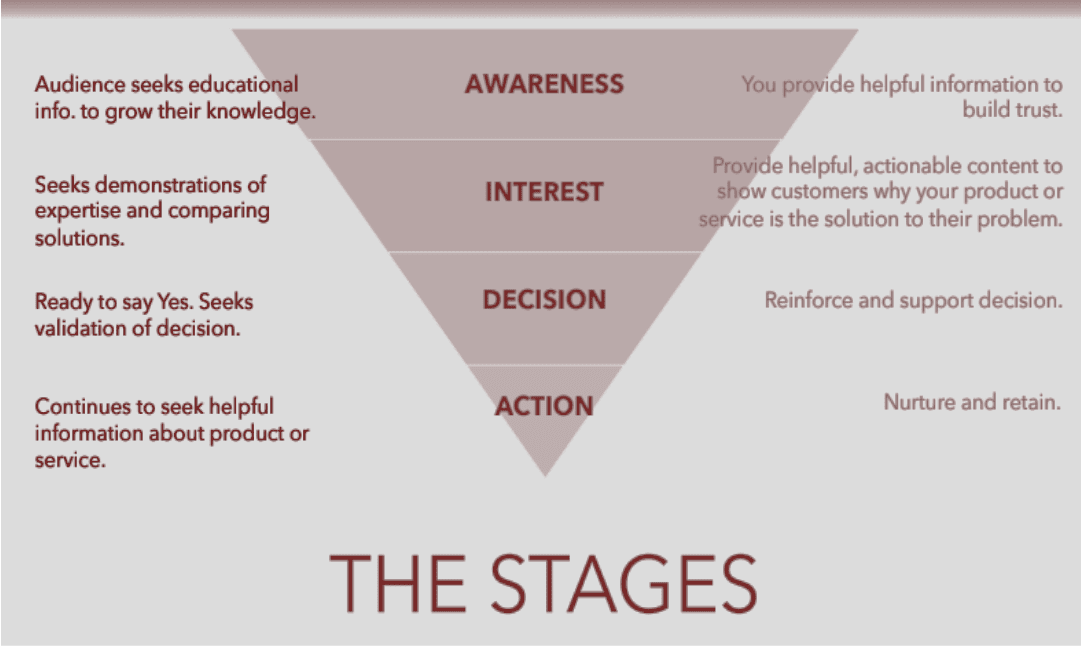
THE TACTICS
There are certain marketing tactics for each type of initiative that can be implemented through your sales funnel, such as Facebook ads, free webinars, free shipping, and loyalty programs. Depending on the stage the person is experiencing, the goal is for people to move from strangers to visitors to leads to customers, and eventually to promoters. The various tactics through the course of the funnel help to engage with the clients according to their needs at each stage.
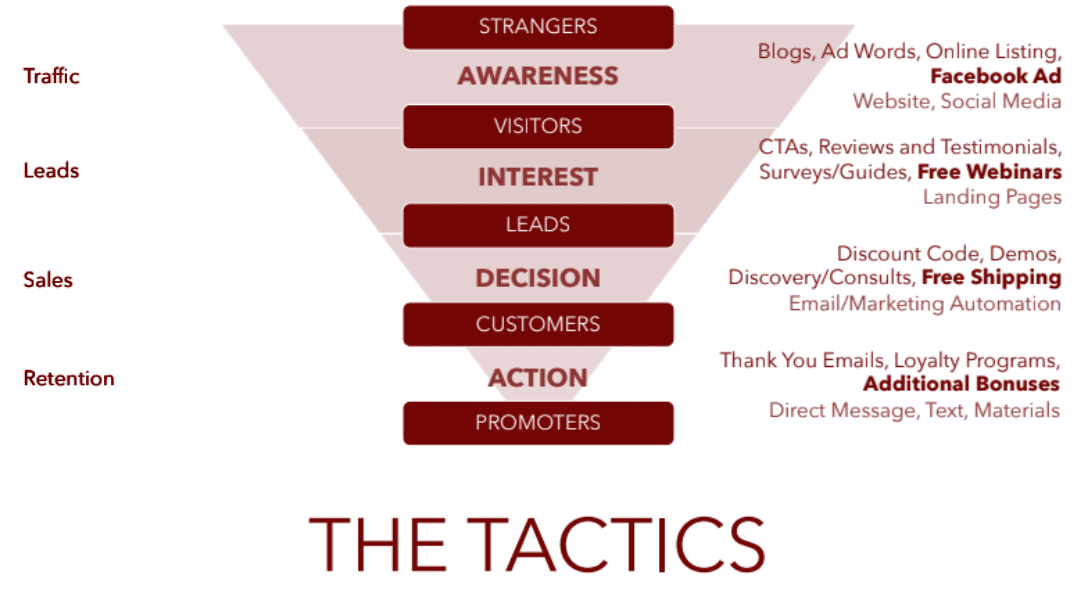
Review your analytics frequently to understand how the clients experience the tunnel and find the best practices that work for your business.
HOW TO BUILD A FUNNEL
Marketing should be research-based. Once you have your customer data, you can implement best practices all the way through the funnel based on the data. It is important to do your diligence and recognize what things are working and what changes are necessary, and adjust accordingly.
- First, analyze your audience.
Revisit who your ideal client is, what their needs are, what they are looking for, and their interests. This helps to identify the demographics of your ideal client. (See our recent post on creating your ideal customer avatar for tips.)
- Second, create content. (See our recent post on creating content with ease and consistency.)
Diversify your content depending on your audience and seasons (if applicable).
- Third, build a landing page.
During the funnel experience, a landing page helps the customer zone in on the precise messaging for their current stage. A landing page is different from your website because it is totally focused on your promotion, on a specific stage of your business, or an exact product. In contrast, your website provides a broader experience and typically includes information about various products as well as background information about you, your business, etc.
- Next, create an email campaign.
Use your email campaign to share any content you create, links to your landing page, and promotions depending on the stage of the customer.
- Then, KIT, or keep in touch.
Stay connected with your customer and continue to nurture the people who have been through the funnel but have not yet converted. Use marketing automations here! Revisit subscribers who have not yet converted with fresh offers to keep them engaged and keep you at the top of mind.
- Lastly, optimize your funnel.
Go back to your funnel to analyze what it is working and what it is not, then make any necessary changes.
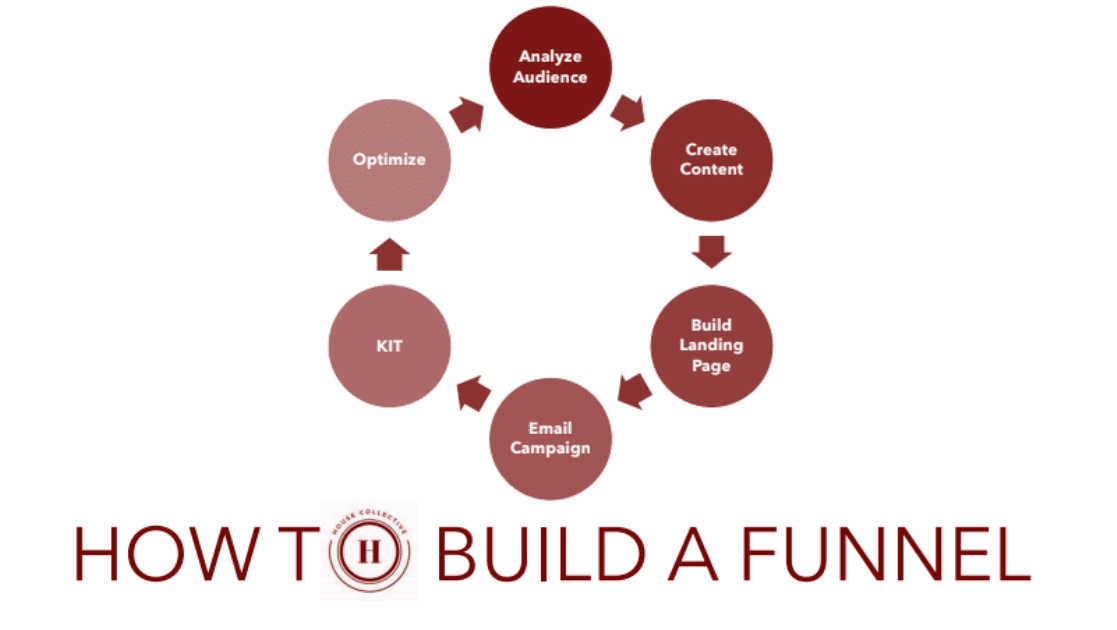
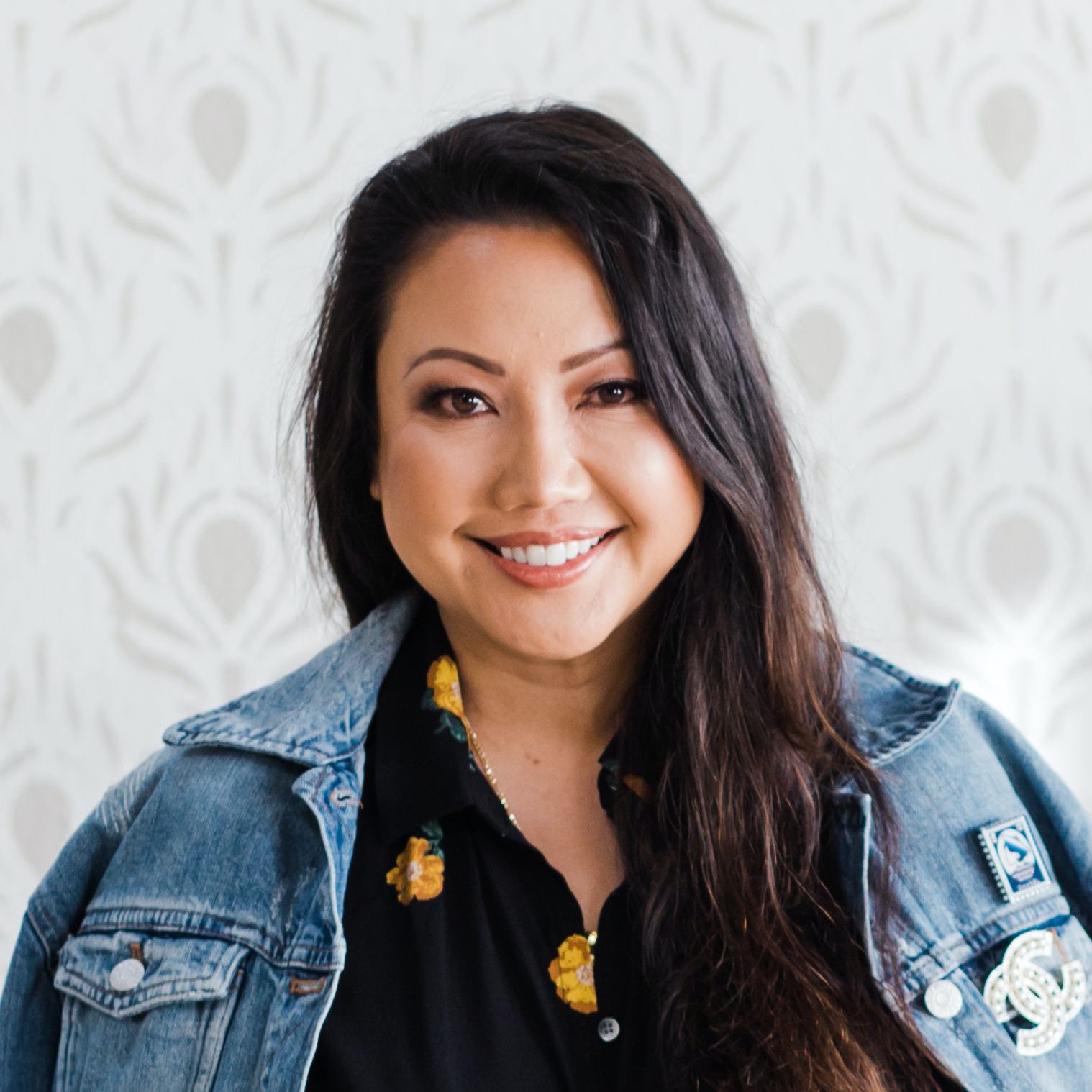 Sarah Yasukochi, MBA is the Founder of House Collective, a marketing agency that empowers purpose-driven entrepreneurs with impactful, strategic marketing systems that elevates their brand, amplifies their messages, and creates a sustainable competitive advantage. Sarah is also Hera Hub Carlsbad’s DIY Marketing Solutions GURU. Click here to learn more about her and how to connect with her during her GURU hours.
Sarah Yasukochi, MBA is the Founder of House Collective, a marketing agency that empowers purpose-driven entrepreneurs with impactful, strategic marketing systems that elevates their brand, amplifies their messages, and creates a sustainable competitive advantage. Sarah is also Hera Hub Carlsbad’s DIY Marketing Solutions GURU. Click here to learn more about her and how to connect with her during her GURU hours.



